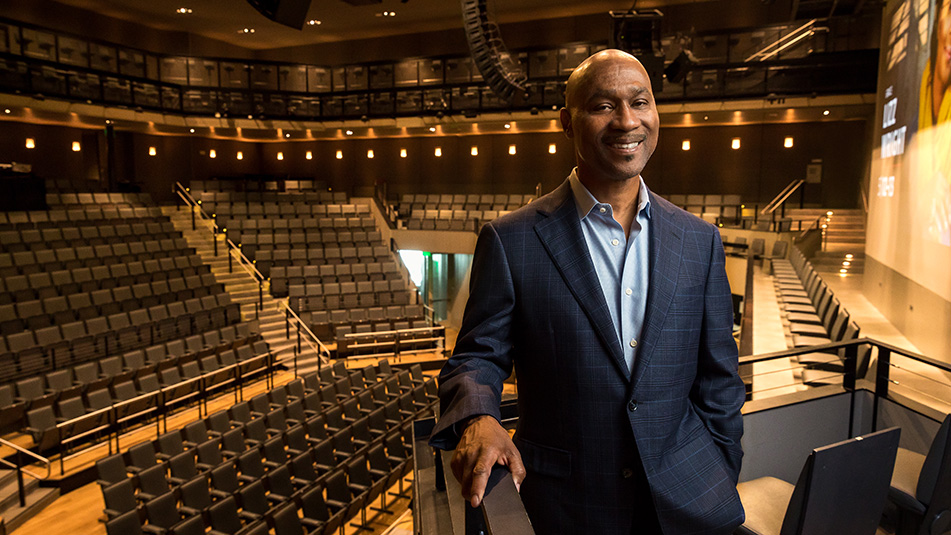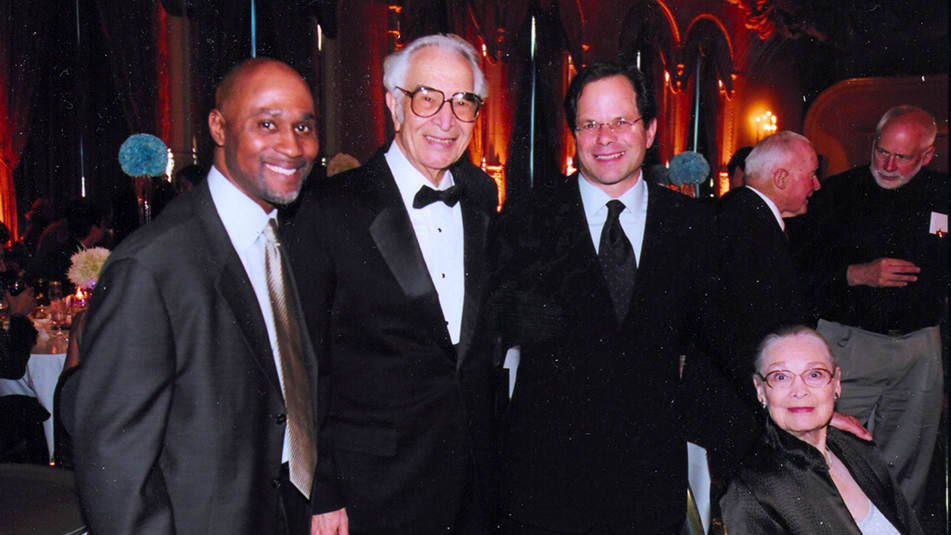A Community Built on Love and Leadership

Photograph by Joseph Fanvu.
Lewis Byrd
SFJAZZ Board Chair and Trustee 2003–2011
Member since 1998
It was the late 1980s, and Lewis Byrd wanted to see vocalist Cassandra Wilson, who was being presented by SFJAZZ at the Masonic Auditorium. In earnest, he got his seats right when the ticket sales opened to the public. To his surprise, he wound up with seats in the back row of the 3,400-seat hall. “It seemed that people who were in the know at SFJAZZ got all the great tickets,” recalls Lewis.
Years passed and, upon chance, Charles Collins, a business acquaintance and then-SFJAZZ trustee, approached Lewis about joining the board.
Lewis was a longtime jazz fan who had already served as a board member and chair of the Tri-City Homeless Coalition in Fremont, and on various boards and committees at his alma mater, Harvard University.
When Lewis eventually took the plunge and became an SFJAZZ trustee in 2003, the organization’s offices were in a rented space in the Embarcadero Center and the concerts it presented were booked into venues across the Bay Area.

Lewis Byrd (left) in 2005 with (left to right) Dave Brubeck, Randall Kline, and Iola Brubeck.
During his nine-year tenure as an SFJAZZ trustee Lewis served, at various times on the board’s finance, development, governance, trustees and executive committees. No matter the committee he served on, the key emphasis for Lewis was always improving the financial health and stability of SFJAZZ and increasing diversity on the board and staff. Lewis felt strongly that bringing more people of color into the organization would increase its vibrancy and authenticity with the listening and artistic community.
Lewis was appointed SFJAZZ board chair in 2008, during a significant period of growth. “For me it’s just about a love of the music. I have been able to attend many concerts and to serve as emcee for a number of shows and thereby meet and get to know many of our performers. Obviously, I’ve put in a whole lot of time – it’s one thing to be on the board, and then another to be chair for three years. You work to ensure that everything goes well, and for every crisis that comes along you’re ultimately responsible. It would be hard to commit that time if you didn’t really love the end product.”
If you’re presenting a fuller spectrum of jazz with lesser-known artists – it’s an ongoing, delicate balancing act between financial and artistic needs.
Lewis knows all too well the complexities of the organization. During his active participation those years, SFJAZZ evolved from a medium-sized nonprofit (and all of the attendant challenges) to its place as a significant member of San Francisco’s artistic and cultural community. Many of these complexities and accompanying challenges were nuanced and deeply tied to the artistic mission of the organization.
“We could have an organization that presented artists like Chris Botti and Herbie Hancock all the time – mainstream performers who can always sell tickets at top dollar and always sell out. That’s one way to do it,” says Lewis. “But there's a tremendous benefit for the community – and to the institution of jazz as a whole – to present a wider spectrum of jazz, including lesser-known artists who explore new areas of the music. It’s an ongoing, delicate balancing act between financial and artistic needs, and continuing to ask and answer the question, ‘What is jazz?’”
Lewis remembers the arduous path to get the organization ready for its capital campaign before the SFJAZZ Center was built. “The building was always at the center of what we were trying to do,” he recalls. The board hired a well-known consulting firm to evaluate the organization’s readiness for a capital campaign. When the results determined that SFJAZZ was not quite ready, it set back the project about a year and half. “But as a result,” says Lewis, “we went back and did the work needed. We prepared presentations and rallied hard to get the organization, board and donor community together.”
Their perseverance paid off. When the board again approached the consultants, they were ready to move forward with the campaign, and what resulted was the Center as we know it today.
After all that he’s experienced with SFJAZZ, what does being a Leaders Circle Member mean to Lewis? “Well, of course, there is the ability to get better seats,” Lewis says with a smile. “But it’s the difference between going to a concert and being part of a family. As a Leaders Circle Member, you get to know the people. You get to know your fellow art enthusiasts. We all have priorities in our lives. How you spend your time and money is the best illustration of that. For me, it’s the music and the people. I have been blessed with my time at SFJAZZ, and I think the organization’s continued growth has been beneficial to the entire Bay Area community, and to this music, worldwide.”
This article is part the SFJAZZ Leaders Circle stories. The Leaders Circle is SFJAZZ’s premier philanthropic group of individuals who believe in the transformative power of the arts.